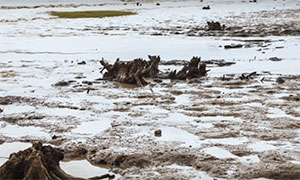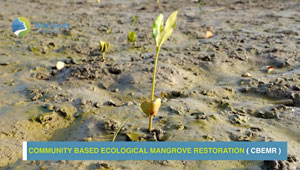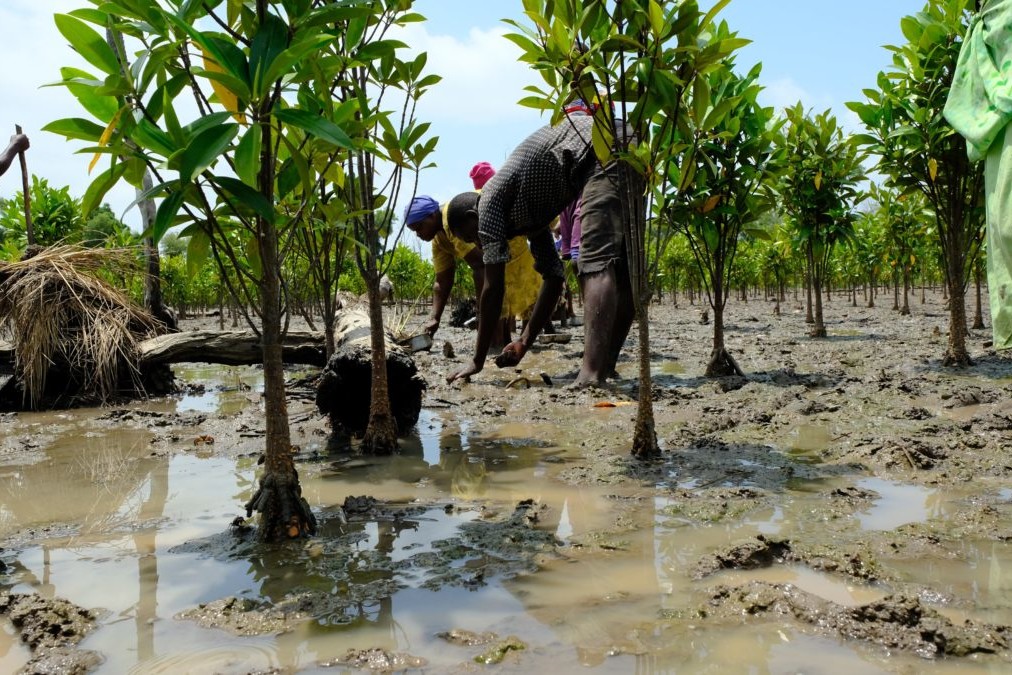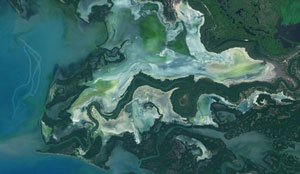The MAP News
|
|
Sea Grant Blue Carbon Law Symposium May 17-18, 2023 in Athens, GAFEATURED STORYHappy Earth Day! We are now taking entries for the 22nd annual Mangrove Art Contest
 GLOBAL - We would like to invite children from your country to join in this fantastic, creative and educational competition. It is an opportunity for the younger generation to learn about the vital role Mangroves play in the lives of coastal communities and marine life around the world whilst letting them explore their imagination and have fun when creating their pieces of art. The competition is open to all children worldwide, with selected winners published in the 2024 calendar to be distributed internationally to raise awareness of mangrove forest ecology. This colorful calendar has increased in popularity since its first publication in 2002. The 2024 calendar is our 22nd edition. We would like to invite children from your country to join in this fantastic creative and educational competition. It is an opportunity for the younger generation to learn about the vital role Mangroves play in the lives of coastal communities and marine life around the world whilst letting them explore their imagination and have fun when creating their pieces of art.Help us make this next calendar contest more successful than ever! Non-profit organizations, NGOs, schools, teachers, and other groups are invited to help organize local calendar contests and help MAP to get students involved. For any questions, contact Monica Gutierrez-Quarto, the international art competition organizer. GLOBAL - We would like to invite children from your country to join in this fantastic, creative and educational competition. It is an opportunity for the younger generation to learn about the vital role Mangroves play in the lives of coastal communities and marine life around the world whilst letting them explore their imagination and have fun when creating their pieces of art. The competition is open to all children worldwide, with selected winners published in the 2024 calendar to be distributed internationally to raise awareness of mangrove forest ecology. This colorful calendar has increased in popularity since its first publication in 2002. The 2024 calendar is our 22nd edition. We would like to invite children from your country to join in this fantastic creative and educational competition. It is an opportunity for the younger generation to learn about the vital role Mangroves play in the lives of coastal communities and marine life around the world whilst letting them explore their imagination and have fun when creating their pieces of art.Help us make this next calendar contest more successful than ever! Non-profit organizations, NGOs, schools, teachers, and other groups are invited to help organize local calendar contests and help MAP to get students involved. For any questions, contact Monica Gutierrez-Quarto, the international art competition organizer.GLOBAL
Can deep learning help us save mangrove forests?AFRICA
'They want to silence us': Uganda cracks down on anti-oil protest
 UGANDA - Ugandan environmental campaigner Judith Bero-Irwoth has spent years warning of the risks of a planned crude oil pipeline and its impact on communities in the west of the country. Protests by activists like Bero-Irwoth have ramped up in the Albertine Graben region and the capital, Kampala, in recent years since France's TotalEnergies and China National Offshore Oil Corporation struck deals to develop Uganda's oil fields. The agreements include the proposed $3.5-billion East African Crude Oil Pipeline (EACOP), which would ship crude from Lake Albert in Uganda to global markets through a port on Tanzania's Indian Ocean coast. Development groups have raised alarm about the impacts on the climate - saying the pipeline will generate 34 million tonnes of carbon emissions annually - and on communities, as an estimated 14,000 households are at risk of losing their land. But climate campaigners are increasingly being targeted and stifled under the Public Management Order Act and legislation governing NGOs, said Dickens Kamugisha, chief executive of the Kampala-based Africa Institute for Energy Governance (AFIEGO). Bero-Irwoth said she had become more cautious since police stormed her home in Buliisa district in September 2021 during a community meeting about the oil development plans.
The government is trying to silence those who are against the pipeline UGANDA - Ugandan environmental campaigner Judith Bero-Irwoth has spent years warning of the risks of a planned crude oil pipeline and its impact on communities in the west of the country. Protests by activists like Bero-Irwoth have ramped up in the Albertine Graben region and the capital, Kampala, in recent years since France's TotalEnergies and China National Offshore Oil Corporation struck deals to develop Uganda's oil fields. The agreements include the proposed $3.5-billion East African Crude Oil Pipeline (EACOP), which would ship crude from Lake Albert in Uganda to global markets through a port on Tanzania's Indian Ocean coast. Development groups have raised alarm about the impacts on the climate - saying the pipeline will generate 34 million tonnes of carbon emissions annually - and on communities, as an estimated 14,000 households are at risk of losing their land. But climate campaigners are increasingly being targeted and stifled under the Public Management Order Act and legislation governing NGOs, said Dickens Kamugisha, chief executive of the Kampala-based Africa Institute for Energy Governance (AFIEGO). Bero-Irwoth said she had become more cautious since police stormed her home in Buliisa district in September 2021 during a community meeting about the oil development plans.
The government is trying to silence those who are against the pipeline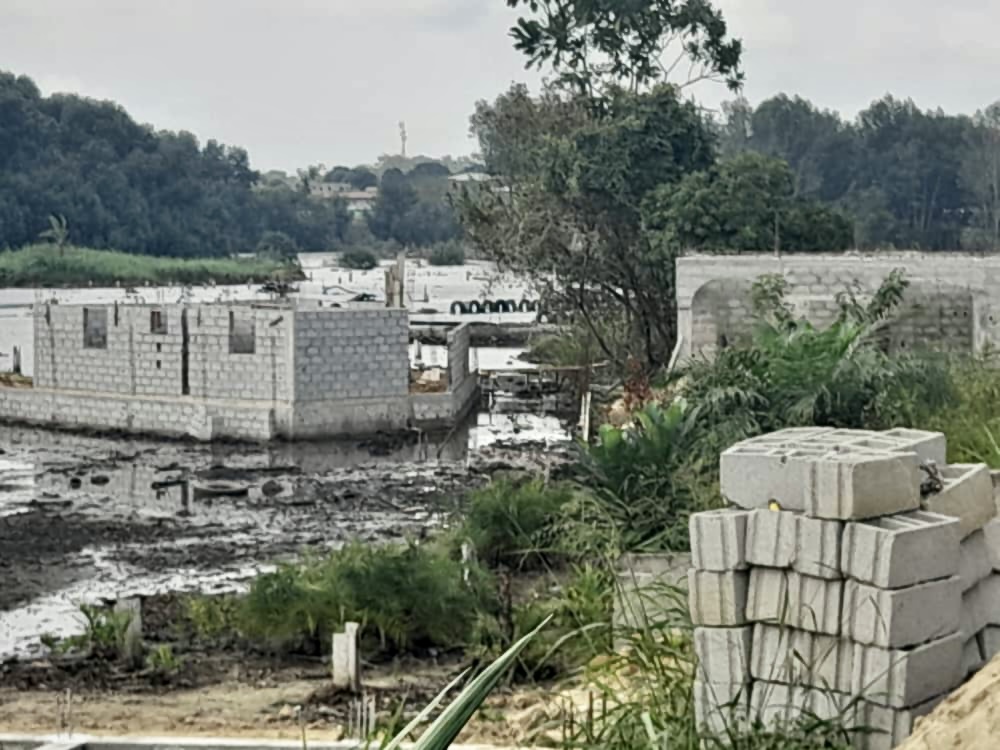 TANZANIA - EACOP is a massive crude oil pipeline that will involve the transportation of crude oil from Hoima in Uganda to a Tanzanian port located in Chongoleani village, in Tanga region. It will cover 1,445 kilometres in Uganda and Tanzania, but 80 per cent of the land it will go through is in Tanzania. Local communities depend on land as the crucial resource to support their livelihoods, which consist mostly of farming and livestock keeping, so if their land is taken or ruined by the pipeline, they will be seriously affected. The project is therefore going to affect the development of many communities and impact negatively on any effort to create a sustainable and liveable local environment. But EACOP will not only affect people; it will also pose a threat to the animals that depend on the land that will be taken up by this project. As most activists and CSOs have noticed, the government is trying to silence those who are against the pipeline. Some of us have raised our concerns since the very beginning of the project but our questions have not been addressed and the project has continued regardless. TANZANIA - EACOP is a massive crude oil pipeline that will involve the transportation of crude oil from Hoima in Uganda to a Tanzanian port located in Chongoleani village, in Tanga region. It will cover 1,445 kilometres in Uganda and Tanzania, but 80 per cent of the land it will go through is in Tanzania. Local communities depend on land as the crucial resource to support their livelihoods, which consist mostly of farming and livestock keeping, so if their land is taken or ruined by the pipeline, they will be seriously affected. The project is therefore going to affect the development of many communities and impact negatively on any effort to create a sustainable and liveable local environment. But EACOP will not only affect people; it will also pose a threat to the animals that depend on the land that will be taken up by this project. As most activists and CSOs have noticed, the government is trying to silence those who are against the pipeline. Some of us have raised our concerns since the very beginning of the project but our questions have not been addressed and the project has continued regardless.Towards International Women's Day 2023
AMERICASMangrove Restoration in Costa Rica: A Collaborative Effort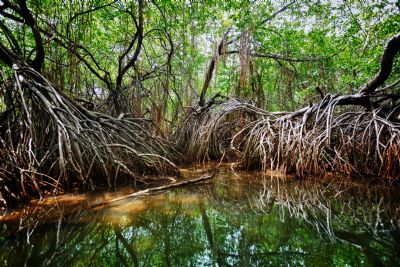 COSTA RICA - Restoration of Bahía Tomas in La Cruz, Guanacaste is one of the latest initiatives by the Davivienda-GIZ-ACG-FPN alliance. This collaborative effort is working towards restoring and preserving the mangrove ecosystem, which has been damaged by climate change and human activities. The project aims to restore three hectares of the Bahía Tomas mangrove ecosystem by the end of 2023. In addition, ten hectares of damaged mangroves will be closely monitored to begin the restoration and conservation process. Biomonitoring and adaptation actions are being carried out to lower salinity, where natural regeneration has not been possible. The alliance’s efforts to preserve the mangroves go beyond restoration. They also support local communities that depend on the ecosystem for their livelihoods. The Cuajiniquil women’s cooperative – Coopemprendedoras – has benefited the most environmentally, socially, and economically from the mangrove restoration. They have been working to obtain a food truck to promote their work, and GIZ is helping them define a business plan and provide the necessary assets and marketing tools to enable the cooperative’s project. COSTA RICA - Restoration of Bahía Tomas in La Cruz, Guanacaste is one of the latest initiatives by the Davivienda-GIZ-ACG-FPN alliance. This collaborative effort is working towards restoring and preserving the mangrove ecosystem, which has been damaged by climate change and human activities. The project aims to restore three hectares of the Bahía Tomas mangrove ecosystem by the end of 2023. In addition, ten hectares of damaged mangroves will be closely monitored to begin the restoration and conservation process. Biomonitoring and adaptation actions are being carried out to lower salinity, where natural regeneration has not been possible. The alliance’s efforts to preserve the mangroves go beyond restoration. They also support local communities that depend on the ecosystem for their livelihoods. The Cuajiniquil women’s cooperative – Coopemprendedoras – has benefited the most environmentally, socially, and economically from the mangrove restoration. They have been working to obtain a food truck to promote their work, and GIZ is helping them define a business plan and provide the necessary assets and marketing tools to enable the cooperative’s project. A New Local Mapping Project Aims to Protect Mangroves 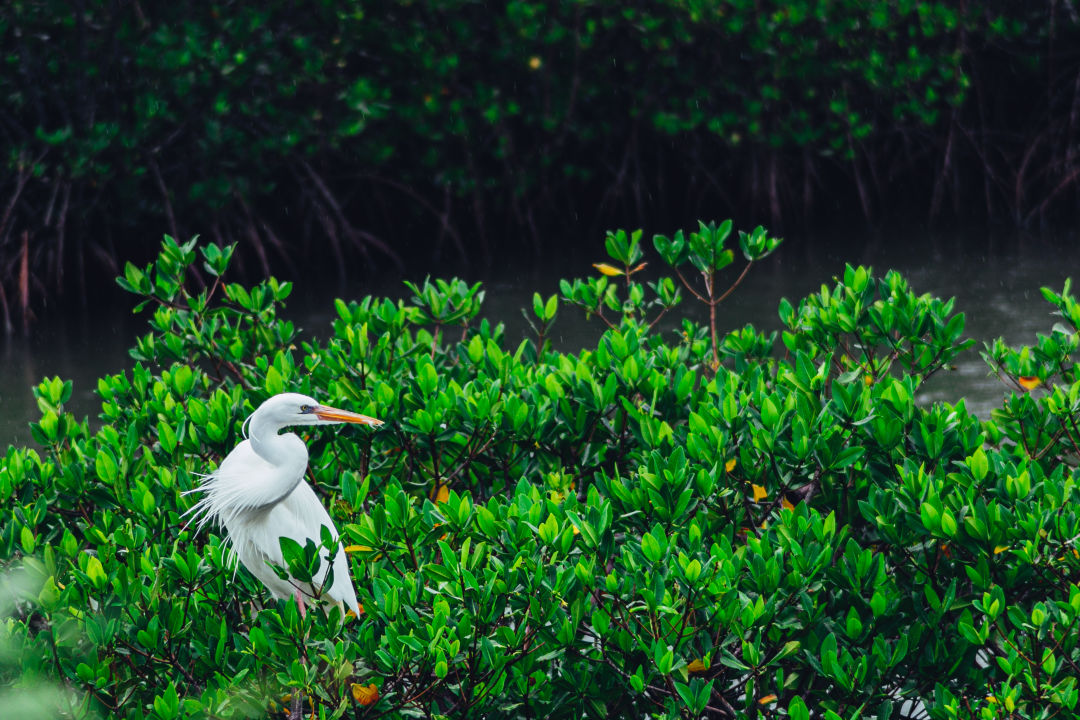 USA - As we know from living on the Suncoast, mangroves are all around us. They grow along almost every coastline, provide habitat for fish and other wildlife, protect our homes from destructive storms and erosion, maintain clean water, and combat climate change, thanks to their carbon-storing abilities. Still, even with their immense beauty and vital importance to our community, mangroves are threatened in our area. To stand up for the trees, Suncoast Waterkeeper has teamed up with Exspanse Artificial Intelligence, Dimensional Geomatics and New College of Florida on a mangrove mapping project, which will track mangrove growth and conditions along northern Sarasota Bay, Palma Sola Bay, southern Tampa Bay, Terra Ceia Bay and the Manatee River. Training for the project starts this month, when Suncoast Waterkeeper and New College data science graduate students will learn how to operate drones, utilizing photogrammetry to measure and map the local mangroves. (Photogrammetry is the act of deriving precise measurements from photographs.) The training, led by Dimensional Geomatics, will provide a standard operating procedure for community and student-based mapping using drone imagery. Exspanse, based out of Longboat Key, will then provide its modeling platform to New College data science students for the hands-on experience of building, training and deploying models using data from the project. USA - As we know from living on the Suncoast, mangroves are all around us. They grow along almost every coastline, provide habitat for fish and other wildlife, protect our homes from destructive storms and erosion, maintain clean water, and combat climate change, thanks to their carbon-storing abilities. Still, even with their immense beauty and vital importance to our community, mangroves are threatened in our area. To stand up for the trees, Suncoast Waterkeeper has teamed up with Exspanse Artificial Intelligence, Dimensional Geomatics and New College of Florida on a mangrove mapping project, which will track mangrove growth and conditions along northern Sarasota Bay, Palma Sola Bay, southern Tampa Bay, Terra Ceia Bay and the Manatee River. Training for the project starts this month, when Suncoast Waterkeeper and New College data science graduate students will learn how to operate drones, utilizing photogrammetry to measure and map the local mangroves. (Photogrammetry is the act of deriving precise measurements from photographs.) The training, led by Dimensional Geomatics, will provide a standard operating procedure for community and student-based mapping using drone imagery. Exspanse, based out of Longboat Key, will then provide its modeling platform to New College data science students for the hands-on experience of building, training and deploying models using data from the project. Mangroves common in South Florida are moving north 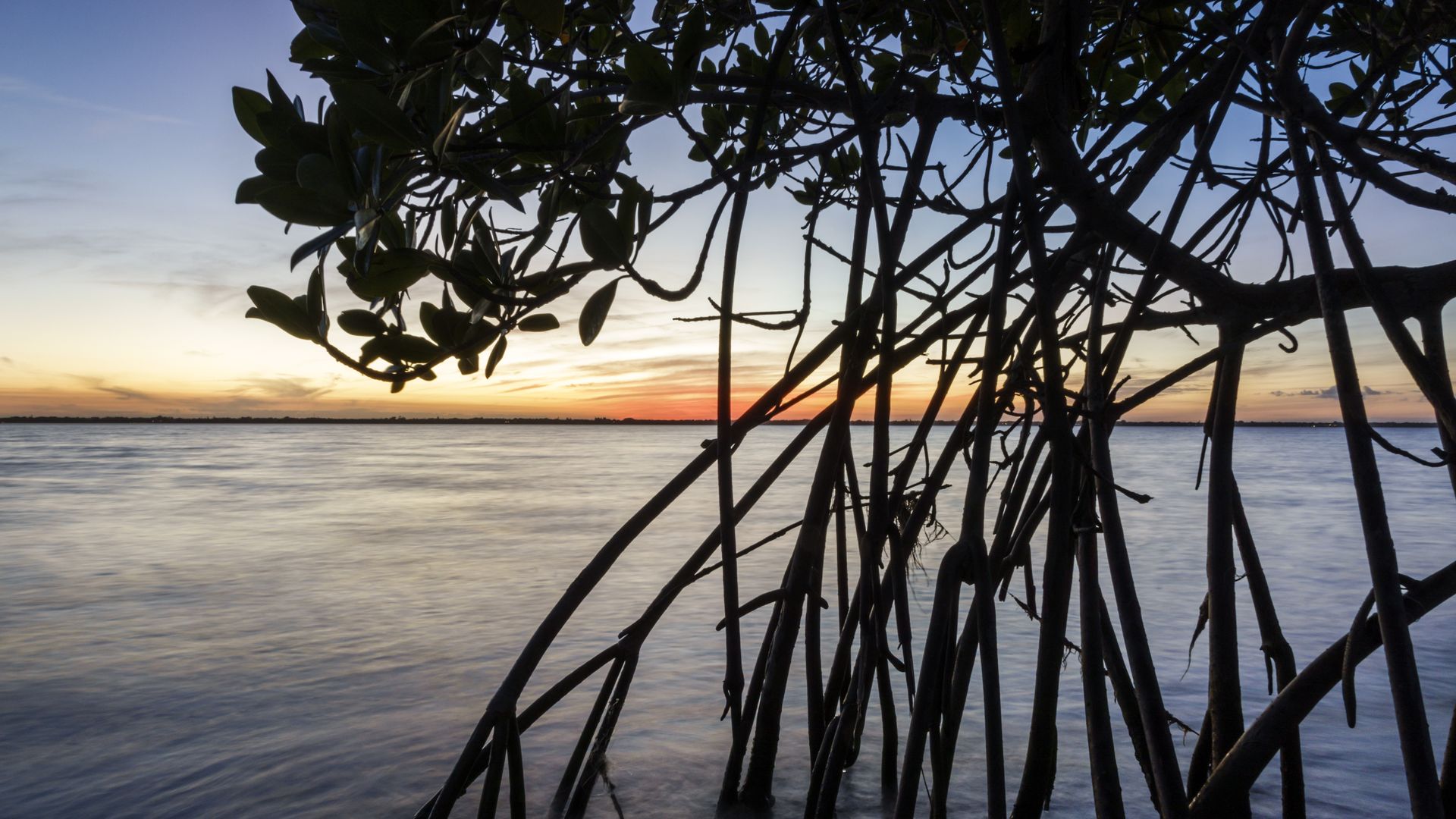 USA - Floridians are familiar with mangroves — but imagine them moving into Georgia or South Carolina. With the country experiencing fewer freeze events, mangroves that thrive in coastal wetlands are moving into salt marsh habitats at higher latitudes, Villanova University professor Samantha Chapman tells Axios. Chapman worked on a study exploring how salt marshes and mangroves build elevation in the face of sea-level rise. While mangroves serve as natural sea barriers for coastal communities, help with carbon storage and provide habitats for animals, the study also says that "consequences of this vegetation shift for ecosystem sustainability remain unknown."The study could help scientists decide how best to manage coastal wetlands, including whether mangroves should be planted. It predicts that black mangroves moving into new environments can build soil elevation by 8 mm per year, four times greater than salt marshes. But mangroves can also drown. Neither salt marshes nor mangroves have survived a centenary sea-level increase of 100 cm. USA - Floridians are familiar with mangroves — but imagine them moving into Georgia or South Carolina. With the country experiencing fewer freeze events, mangroves that thrive in coastal wetlands are moving into salt marsh habitats at higher latitudes, Villanova University professor Samantha Chapman tells Axios. Chapman worked on a study exploring how salt marshes and mangroves build elevation in the face of sea-level rise. While mangroves serve as natural sea barriers for coastal communities, help with carbon storage and provide habitats for animals, the study also says that "consequences of this vegetation shift for ecosystem sustainability remain unknown."The study could help scientists decide how best to manage coastal wetlands, including whether mangroves should be planted. It predicts that black mangroves moving into new environments can build soil elevation by 8 mm per year, four times greater than salt marshes. But mangroves can also drown. Neither salt marshes nor mangroves have survived a centenary sea-level increase of 100 cm.
ASIA How India’s coastal forests could become a goldmine
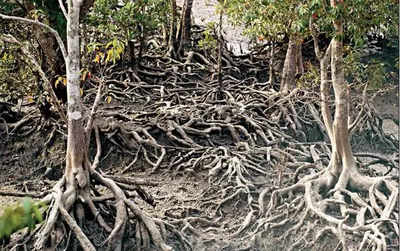 INDIA - They lack the solemnity of a banyan tree and the stature of a deodar, but mangroves are second to none in the fight against climate change. Be it the Sundarbans in Bengal or the Gulf of Kachchh mangroves in Gujarat, they have been soaking up carbon dioxide with about five times the efficiency of terrestrial trees. That’s because they absorb this greenhouse gas from both the ground and the air with their aerial roots. Recognising the importance of mangroves, the Centre had announced the Mangrove Initiative for Shoreline Habitats & Tangible Incomes (MISHTI) scheme in this year’s Budget. Under the scheme, mangroves will be planted along India’s coasts and on salt pan lands. However, experts say the scheme’s success will depend on focused surveys to understand the mangrove ecosystems. Recognising the importance of mangroves, the Centre had announced the Mangrove Initiative for Shoreline Habitats & Tangible Incomes (MISHTI) scheme in this year’s Budget. Under the scheme, mangroves will be planted along India’s coasts and on salt pan lands. However, experts say the scheme’s success will depend on focused surveys to understand the mangrove ecosystems. “Conservation, plantation, and restoration of mangroves need to be sped up,” says Kathiresan Kandasamy , former director and honorary professor of the Department of Marine Science at Annamalai University. INDIA - They lack the solemnity of a banyan tree and the stature of a deodar, but mangroves are second to none in the fight against climate change. Be it the Sundarbans in Bengal or the Gulf of Kachchh mangroves in Gujarat, they have been soaking up carbon dioxide with about five times the efficiency of terrestrial trees. That’s because they absorb this greenhouse gas from both the ground and the air with their aerial roots. Recognising the importance of mangroves, the Centre had announced the Mangrove Initiative for Shoreline Habitats & Tangible Incomes (MISHTI) scheme in this year’s Budget. Under the scheme, mangroves will be planted along India’s coasts and on salt pan lands. However, experts say the scheme’s success will depend on focused surveys to understand the mangrove ecosystems. Recognising the importance of mangroves, the Centre had announced the Mangrove Initiative for Shoreline Habitats & Tangible Incomes (MISHTI) scheme in this year’s Budget. Under the scheme, mangroves will be planted along India’s coasts and on salt pan lands. However, experts say the scheme’s success will depend on focused surveys to understand the mangrove ecosystems. “Conservation, plantation, and restoration of mangroves need to be sped up,” says Kathiresan Kandasamy , former director and honorary professor of the Department of Marine Science at Annamalai University. Cross-sectional research into mangrove blue carbon: A tale from two islands
 KOREA - The Indo-West Pacific Region, which includes East Asia, hosts the most diverse mangrove ecosystems in the world. Their distribution area is gradually expanding, and migrating, owing to climate change. To better understand this phenomenon and learn how to maintain healthy mangrove systems, researchers with the National Institute of Forest Science (NIFoS) in the Republic of Korea have been working with the Center for International Forestry Research and World Agroforestry (CIFOR-ICRAF), Indonesia’s National Research and Innovation Agency and Udayana University in Denpasar, Bali Province. The Korean Peninsula is in the northernmost sub-tropical climate zone. Two species of semi-mangrove trees grow there, including on the southernmost Jeju Island, and their range has been expanding incrementally as temperatures increase, indicating potential for true mangroves to be established in Korea. The island of Bali in Indonesia is home to healthy sites of planted and extant mangrove forests, particularly, the 1373 hectares (ha) of the I Ngurah Rai Great Forest Park near the international airport. “Conservation and restoration of coastal and marine ecosystems is a promising approach to address climate change,” said Ni Luh Watiniasih, Dean of the Faculty of Mathematics and Natural Sciences at Udayana University. KOREA - The Indo-West Pacific Region, which includes East Asia, hosts the most diverse mangrove ecosystems in the world. Their distribution area is gradually expanding, and migrating, owing to climate change. To better understand this phenomenon and learn how to maintain healthy mangrove systems, researchers with the National Institute of Forest Science (NIFoS) in the Republic of Korea have been working with the Center for International Forestry Research and World Agroforestry (CIFOR-ICRAF), Indonesia’s National Research and Innovation Agency and Udayana University in Denpasar, Bali Province. The Korean Peninsula is in the northernmost sub-tropical climate zone. Two species of semi-mangrove trees grow there, including on the southernmost Jeju Island, and their range has been expanding incrementally as temperatures increase, indicating potential for true mangroves to be established in Korea. The island of Bali in Indonesia is home to healthy sites of planted and extant mangrove forests, particularly, the 1373 hectares (ha) of the I Ngurah Rai Great Forest Park near the international airport. “Conservation and restoration of coastal and marine ecosystems is a promising approach to address climate change,” said Ni Luh Watiniasih, Dean of the Faculty of Mathematics and Natural Sciences at Udayana University. ‘I was born here, and I will die here’: Mangrove-planting is helping this man save his flooded home
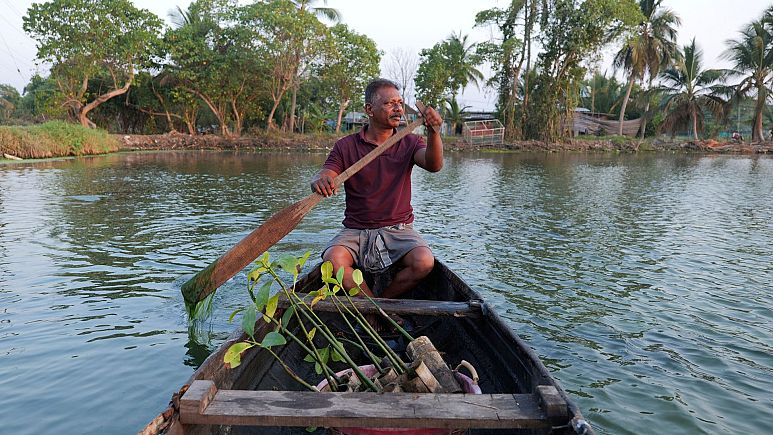 INDIA - Sea level rise and severe tidal floods are forcing residents of India’s Vypin Island to relocate to higher ground. “The floods are occurring more frequently and lasting longer,” says T P Murukesan, who lives on the low-lying island of India’s western coast. The last flood was chest-height for his young grandson. “Every flood brings waters this high, we just deal with it.” In his raised home, white paint peels off the damp walls. But the retired fisherman has almost single handedly been buffering the impacts of the rising waters in his community. Known locally as ‘Mangrove Man’, Murukesan has turned to planting the trees along the receding shores of Vypin in the Kochi region of Kerala state. Murukesan says he has planted over 100,000 mangroves. He plants saplings on alternate days and does most of the work himself. The mangroves he planted in and around the area in 2014 have grown into a dense thicket and are helping reduce the intensity of tidal flooding, he says. Some help comes in the form of saplings from the M S Swaminathan Research Foundation, a non-government organisation based in Chennai, India. INDIA - Sea level rise and severe tidal floods are forcing residents of India’s Vypin Island to relocate to higher ground. “The floods are occurring more frequently and lasting longer,” says T P Murukesan, who lives on the low-lying island of India’s western coast. The last flood was chest-height for his young grandson. “Every flood brings waters this high, we just deal with it.” In his raised home, white paint peels off the damp walls. But the retired fisherman has almost single handedly been buffering the impacts of the rising waters in his community. Known locally as ‘Mangrove Man’, Murukesan has turned to planting the trees along the receding shores of Vypin in the Kochi region of Kerala state. Murukesan says he has planted over 100,000 mangroves. He plants saplings on alternate days and does most of the work himself. The mangroves he planted in and around the area in 2014 have grown into a dense thicket and are helping reduce the intensity of tidal flooding, he says. Some help comes in the form of saplings from the M S Swaminathan Research Foundation, a non-government organisation based in Chennai, India. Feature Video Will Charouhis - A Million Mangroves
Meet Will Charouhis, founder of We are Forces of Nature, a nonprofit combating climate change and protecting coastlines through initiatives like A Million Mangroves. Despite the challenges of planting mangroves, Will's perseverance has led to over 1,000 seedlings being planted in the past two years. As he continues field research to improve seedling growth, he encourages all to join the fight against climate change.
Like this newsletter?  Pease consider donating to MAP to keep it going. Giving could never be easier  *Articles in this newsletter may mention practices being used and/or show exagerated results being claimed without proof. Stories are presented here in effort to show mangrove related activity around the world and do not necessarily reflect Mangrove Action Project's views or mangrove restoration best-practices. NOTICEChildrens Art Calendars 2024
CONTEST TO START SOON!
ACTION ALERTS
|
|
|
Mangrove Action Project Click here to view past newsletters
|
|
Search News Archive
Saturday, April 22, 2023
MAP News Issue #570 - April 22, 2023
Saturday, April 8, 2023
MAP News Issue #569 - April 8, 2023
The MAP News
|
|
Sea Grant Blue Carbon Law Symposium May 17-18, 2023 in Athens, GAFEATURE STORYCoastal Lagoon Education program launched
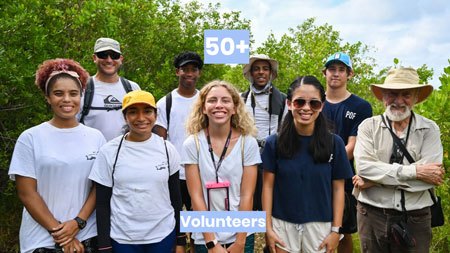 CAYMAN ISLANDS - Coastal Lagoon Education Project announced its new website which provides educational resources, recording observations and connection with the community. Raising awareness of the key issues Coastal Lagoons are facing both locally and around the world is vital to the ongoing mission of environmental preservation and protection. CSL firmly believes that they need to work together to make positive changes to behaviour and practices to ensure future generations can benefit and enjoy natural habitats such as coastal lagoons. Introducing students, teachers, parents and their communities to the wonderful world of the tropical lagoon coastline through a curriculum-based, hands-on science program. Linking exciting and fun-filled ecological exploration with a deep understanding of the importance and intricacies of this wonderful ecosystem throughout the Caribbean and world-wide. The Coastal Lagoon ecosystem comprises three uniquely interdependent ecosystems - mangroves, seagrass and coral reefs. While each individual system is specifically biodiverse they are all interrelated, sharing and depending on a series of unique forms of flora and fauna. The education program emphasises this connectivity. CAYMAN ISLANDS - Coastal Lagoon Education Project announced its new website which provides educational resources, recording observations and connection with the community. Raising awareness of the key issues Coastal Lagoons are facing both locally and around the world is vital to the ongoing mission of environmental preservation and protection. CSL firmly believes that they need to work together to make positive changes to behaviour and practices to ensure future generations can benefit and enjoy natural habitats such as coastal lagoons. Introducing students, teachers, parents and their communities to the wonderful world of the tropical lagoon coastline through a curriculum-based, hands-on science program. Linking exciting and fun-filled ecological exploration with a deep understanding of the importance and intricacies of this wonderful ecosystem throughout the Caribbean and world-wide. The Coastal Lagoon ecosystem comprises three uniquely interdependent ecosystems - mangroves, seagrass and coral reefs. While each individual system is specifically biodiverse they are all interrelated, sharing and depending on a series of unique forms of flora and fauna. The education program emphasises this connectivity.GLOBAL
Oceanographic connectivity explains the intra-specific diversity of mangrove forests at global scales GLOBAL - Among the multiple drivers shaping the intra-specific diversity (i.e., genetic diversity) of mangrove forests, the role of connectivity driven by ocean currents has not been well defined at global scales, despite its potential role in regulating population gene flow. Using biophysical modeling and empirical genetic data, we show that oceanographic connectivity can explain population genetic differentiation in mangroves, regardless of the species, region, and genetic marker, overcoming classical approaches based on geographic distance. Ocean currents can either create barriers that isolate populations and increase differentiation levels or promote long-distance dispersal responsible for first settlements and broadscale biogeographical patterns. These findings are relevant for mangroves’ biogeography and evolution, as well as management strategies considering climate change and genetic biodiversity conservation. We show that ocean currents produce skewed dispersal kernels for mangroves, highlighting the role of rare long-distance dispersal events responsible for historical settlements. Overall, we demonstrate the role of oceanographic connectivity in structuring mangrove intra-specific diversity. Our findings are critical for mangroves’ biogeography and evolution, but also for management strategies considering climate change and genetic biodiversity conservation. GLOBAL - Among the multiple drivers shaping the intra-specific diversity (i.e., genetic diversity) of mangrove forests, the role of connectivity driven by ocean currents has not been well defined at global scales, despite its potential role in regulating population gene flow. Using biophysical modeling and empirical genetic data, we show that oceanographic connectivity can explain population genetic differentiation in mangroves, regardless of the species, region, and genetic marker, overcoming classical approaches based on geographic distance. Ocean currents can either create barriers that isolate populations and increase differentiation levels or promote long-distance dispersal responsible for first settlements and broadscale biogeographical patterns. These findings are relevant for mangroves’ biogeography and evolution, as well as management strategies considering climate change and genetic biodiversity conservation. We show that ocean currents produce skewed dispersal kernels for mangroves, highlighting the role of rare long-distance dispersal events responsible for historical settlements. Overall, we demonstrate the role of oceanographic connectivity in structuring mangrove intra-specific diversity. Our findings are critical for mangroves’ biogeography and evolution, but also for management strategies considering climate change and genetic biodiversity conservation.
AFRICA
Ocean rim states liaise over conservation of mangroves
 TANZANIA - Dr Amani Ngusaru, the country director for the World Wide Fund for Nature (WWF), said at the opening ceremony that the forests are an important component of the marine ecosystem. Marine conservation experts in the region are scratching their heads on how to protect the mangrove ecosystem of the western Indian Ocean region, he said, affirming that enhanced governance and management of mangrove forests was a major requirement. Threats to the ecosystem arise from natural trends like rising sea levels and certain economic activities, he told the experts meeting under the Western Indian Ocean Mangrove Network (WIOMN). They come from institutions in Tanzania, Kenya, Mozambique, South Africa, Madagascar, Somalia, the Comoros, Mauritius and the Seychelles. Occasional threats on mangrove threats include floods as they result in water-level alteration, bank erosion, and diversion of water courses. There is also sand deposition from sea and land that cuts off portions of mangrove forests from salt water even with sea-level rise as a result of global warming, he said. “Marine life is not complete without sea grasses, mangroves and reefs because creatures like fish live, eat and reproduce in such features. Therefore without proper management, the coastal ecosystem will be dead,” he said.Tanzania’s sea mangroves are legally protected though there are challenges threatening their sustainability, including human activities that are now being controlled, the director noted. TANZANIA - Dr Amani Ngusaru, the country director for the World Wide Fund for Nature (WWF), said at the opening ceremony that the forests are an important component of the marine ecosystem. Marine conservation experts in the region are scratching their heads on how to protect the mangrove ecosystem of the western Indian Ocean region, he said, affirming that enhanced governance and management of mangrove forests was a major requirement. Threats to the ecosystem arise from natural trends like rising sea levels and certain economic activities, he told the experts meeting under the Western Indian Ocean Mangrove Network (WIOMN). They come from institutions in Tanzania, Kenya, Mozambique, South Africa, Madagascar, Somalia, the Comoros, Mauritius and the Seychelles. Occasional threats on mangrove threats include floods as they result in water-level alteration, bank erosion, and diversion of water courses. There is also sand deposition from sea and land that cuts off portions of mangrove forests from salt water even with sea-level rise as a result of global warming, he said. “Marine life is not complete without sea grasses, mangroves and reefs because creatures like fish live, eat and reproduce in such features. Therefore without proper management, the coastal ecosystem will be dead,” he said.Tanzania’s sea mangroves are legally protected though there are challenges threatening their sustainability, including human activities that are now being controlled, the director noted.Libreville’s shrinking mangroves leave Gabon’s capital prone to floods  GABON - In 2021, Gabon’s space research agency, AGEOS, concluded that the country’s capital, Libreville, had lost nearly 70 hectares (170 acres) of mangroves in three years. That’s an area about a fifth the size of New York City’s Central Park, which “is not much,” says Alfred Ngomanda, commissioner of the National Centre for Scientific and Technological Research of Gabon (CENAREST). “The surface area of mangroves in Gabon is much larger than that,” he tells Mongabay. “We have a deforestation rate that is not even 1%.” But while this may be a negligible amount at the national level, on the scale of Libreville, which has 1,883 hectares (4,653 acres) of mangroves, this represents 3.55% — which is worrying, says Magloire Désiré Mounganga, a former scientific coordinator at the ANPN, Gabon’s national parks agency. “There are several things that threaten it,” he says. “First of all, there is erosion, i.e. the rise of the sea, but when I go out into the field I also see urban pressure. It is such that the mangrove ecosystem which is in the urban periphery, unfortunately, is destined to be regularly damaged, if not completely destroyed.” GABON - In 2021, Gabon’s space research agency, AGEOS, concluded that the country’s capital, Libreville, had lost nearly 70 hectares (170 acres) of mangroves in three years. That’s an area about a fifth the size of New York City’s Central Park, which “is not much,” says Alfred Ngomanda, commissioner of the National Centre for Scientific and Technological Research of Gabon (CENAREST). “The surface area of mangroves in Gabon is much larger than that,” he tells Mongabay. “We have a deforestation rate that is not even 1%.” But while this may be a negligible amount at the national level, on the scale of Libreville, which has 1,883 hectares (4,653 acres) of mangroves, this represents 3.55% — which is worrying, says Magloire Désiré Mounganga, a former scientific coordinator at the ANPN, Gabon’s national parks agency. “There are several things that threaten it,” he says. “First of all, there is erosion, i.e. the rise of the sea, but when I go out into the field I also see urban pressure. It is such that the mangrove ecosystem which is in the urban periphery, unfortunately, is destined to be regularly damaged, if not completely destroyed.”AMERICASThe Nature Conservancy Identifies Sites for Mangrove Insurance Pilot Projects in The Bahamas, Florida, and Mexico NORTH AMERICA - Today, The Nature Conservancy (TNC), in collaboration with AXA XL, CINVESTAV-Merida, the University of California Santa Cruz, and Builders Initiative Foundation— published the final of three reports that assess the feasibility of mangrove insurance policies in The Bahamas, Florida, and Mexico. This final report builds on previous research that showed these locations have some of the largest areas of mangroves that would be cost-effective to restore for their flood risk reduction benefits. The report identifies nine specific locations—three in Mexico, four in Florida, and two in The Bahamas—as potential sites for mangrove insurance pilot projects. These locations were identified based on the presence of large areas of mangroves, the high protective value of mangroves, and strong interest from key stakeholders.“Mangroves are cornerstones of climate resilience for coastal communities – they serve as an important source of risk reduction and provide sustenance and livelihood co-benefits along with carbon sequestration,” said Daniel Morchain, TNC’s Global Climate Adaptation Director. “Given the alarming rate of mangrove loss worldwide, a viable solution is needed to finance mangrove restoration and protection. We are optimistic about the potential for establishing mangrove insurance policies in locations where mangroves buffer communities from the impacts of storms, support the health and well-being of local communities, and capture and store carbon to mitigate the impacts of climate change.” NORTH AMERICA - Today, The Nature Conservancy (TNC), in collaboration with AXA XL, CINVESTAV-Merida, the University of California Santa Cruz, and Builders Initiative Foundation— published the final of three reports that assess the feasibility of mangrove insurance policies in The Bahamas, Florida, and Mexico. This final report builds on previous research that showed these locations have some of the largest areas of mangroves that would be cost-effective to restore for their flood risk reduction benefits. The report identifies nine specific locations—three in Mexico, four in Florida, and two in The Bahamas—as potential sites for mangrove insurance pilot projects. These locations were identified based on the presence of large areas of mangroves, the high protective value of mangroves, and strong interest from key stakeholders.“Mangroves are cornerstones of climate resilience for coastal communities – they serve as an important source of risk reduction and provide sustenance and livelihood co-benefits along with carbon sequestration,” said Daniel Morchain, TNC’s Global Climate Adaptation Director. “Given the alarming rate of mangrove loss worldwide, a viable solution is needed to finance mangrove restoration and protection. We are optimistic about the potential for establishing mangrove insurance policies in locations where mangroves buffer communities from the impacts of storms, support the health and well-being of local communities, and capture and store carbon to mitigate the impacts of climate change.”Sea Grant Blue Carbon Law Symposium 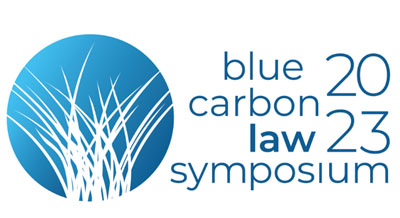 USA - The first Sea Grant Blue Carbon Law Symposium will convene legal scholars, ESG investors, conservation finance and carbon registry specialists, coastal and marine decision-makers, and scientists to co-create a whole-field understanding of the role and opportunity for coastal blue carbon investment. The first Sea Grant Blue Carbon Law Symposium will be held at the University of Georgia in Athens, GA, May 17-18, 2023. We hope that you will join us to explore this emerging area of science, policy, and law. USA - The first Sea Grant Blue Carbon Law Symposium will convene legal scholars, ESG investors, conservation finance and carbon registry specialists, coastal and marine decision-makers, and scientists to co-create a whole-field understanding of the role and opportunity for coastal blue carbon investment. The first Sea Grant Blue Carbon Law Symposium will be held at the University of Georgia in Athens, GA, May 17-18, 2023. We hope that you will join us to explore this emerging area of science, policy, and law.Our objectives are to: understand the legal and policy context of carbon credit markets and how blue carbon fits with these markets, discuss what “blue carbon” means and the state of blue carbon science, assess the quality of claims about blue carbon project potential under qualification conditions, learn about specific blue carbon projects being developed in the U.S. and internationally, and identify challenges, barriers, and social equity needs to determine successful blue carbon projects. This year’s Blue Carbon Law Symposium is co-organized by Georgia Sea Grant, the University of Georgia Institute of Government, the University of Georgia School of Law, and the South Carolina Sea Grant Consortium, with funding provided by the National Sea Grant Law Center. If you are interested in co-sponsoring this event please contact Brita Jessen. We are accepting submissions to the Sea Grant Law and Policy Journal. Abstracts submissions (300 words maximum) should be based on original, unpublished work. Please include the title of the paper, author’s name, affiliations, and appropriate contact information and submit as a Word document to Catherine Janasie. Neighbors sink plan to bulldoze mangroves ASIA In India, mangrove trees make way for booming city of Kochi
 INDIA - Burrowed between mangroves and a bustling skyline, 70-year-old Rajan, who only uses one name, reminisces about his old home. For nearly sixty years, Rajan has lived comfortably among the trees in Mangalavanam forest in India’s southern Kerala state. In the last two decades, the surrounding city of Kochi has boomed as the state’s financial capital and swallowed up once-protected green areas, including Rajan’s former home. He was forced to sell his land to a local private realtor when the area was bought up for construction about 15 years ago. He moved into a makeshift dwelling on the edge of a protected bird sanctuary.“Now there are buildings all around and no wind," said Rajan, adding that the towering concrete has made the city and forest stifling hot. Government buildings, private offices and homes have sprung up at pace, cutting deep into the forest known as the “green lung of Kochi.” The trees are now squeezed on all sides by buildings, construction and smog.Environmentalists are concerned over the loss and declining health of mangrove cover, which is particularly effective at sucking planet-warming carbon dioxide out of the air, can fend off scorching heat for nearby residents and sustains populations of local wildlife. INDIA - Burrowed between mangroves and a bustling skyline, 70-year-old Rajan, who only uses one name, reminisces about his old home. For nearly sixty years, Rajan has lived comfortably among the trees in Mangalavanam forest in India’s southern Kerala state. In the last two decades, the surrounding city of Kochi has boomed as the state’s financial capital and swallowed up once-protected green areas, including Rajan’s former home. He was forced to sell his land to a local private realtor when the area was bought up for construction about 15 years ago. He moved into a makeshift dwelling on the edge of a protected bird sanctuary.“Now there are buildings all around and no wind," said Rajan, adding that the towering concrete has made the city and forest stifling hot. Government buildings, private offices and homes have sprung up at pace, cutting deep into the forest known as the “green lung of Kochi.” The trees are now squeezed on all sides by buildings, construction and smog.Environmentalists are concerned over the loss and declining health of mangrove cover, which is particularly effective at sucking planet-warming carbon dioxide out of the air, can fend off scorching heat for nearby residents and sustains populations of local wildlife.First Dugong Conservation Reserve to be built in India
 INDIA - India’s first Dugong conservation reserve will be built in Tamil Nadu for the conservation of Dugong, a marine animal that has been enlisted vulnerable to extinction on a global scale by the World Conservation Union (IUCN). Principal Secretary, Environment Climate Change & Forests, Government of Tamil Nadu, Supriya Sahu took to her social media account to confirm the news. She wrote, “Government of Tamil Nadu will set up India’s first Dugong Conservation Reserve in the Palk Bay.” The reserve will spread over an area of 500 km in Palk Bay on the southeast coast of Tamil Nadu. Palk Bay is a semi-enclosed shallow water body with a water depth maximum of 13 meters. Located between India and Sri Lanka along the Tamil Nadu coast, the dugong is a flagship species in the region. Dugong or the sea cow is the State animal of Andaman & Nicobar Islands. This endangered marine species survive on seagrass and other aquatic vegetation found in the area. It is the only herbivorous mammal that is strictly marine and is the only extant species in the family Dugongidae. INDIA - India’s first Dugong conservation reserve will be built in Tamil Nadu for the conservation of Dugong, a marine animal that has been enlisted vulnerable to extinction on a global scale by the World Conservation Union (IUCN). Principal Secretary, Environment Climate Change & Forests, Government of Tamil Nadu, Supriya Sahu took to her social media account to confirm the news. She wrote, “Government of Tamil Nadu will set up India’s first Dugong Conservation Reserve in the Palk Bay.” The reserve will spread over an area of 500 km in Palk Bay on the southeast coast of Tamil Nadu. Palk Bay is a semi-enclosed shallow water body with a water depth maximum of 13 meters. Located between India and Sri Lanka along the Tamil Nadu coast, the dugong is a flagship species in the region. Dugong or the sea cow is the State animal of Andaman & Nicobar Islands. This endangered marine species survive on seagrass and other aquatic vegetation found in the area. It is the only herbivorous mammal that is strictly marine and is the only extant species in the family Dugongidae.OCEANA Blue carbon researchers develop new way to protect coastal wetlands
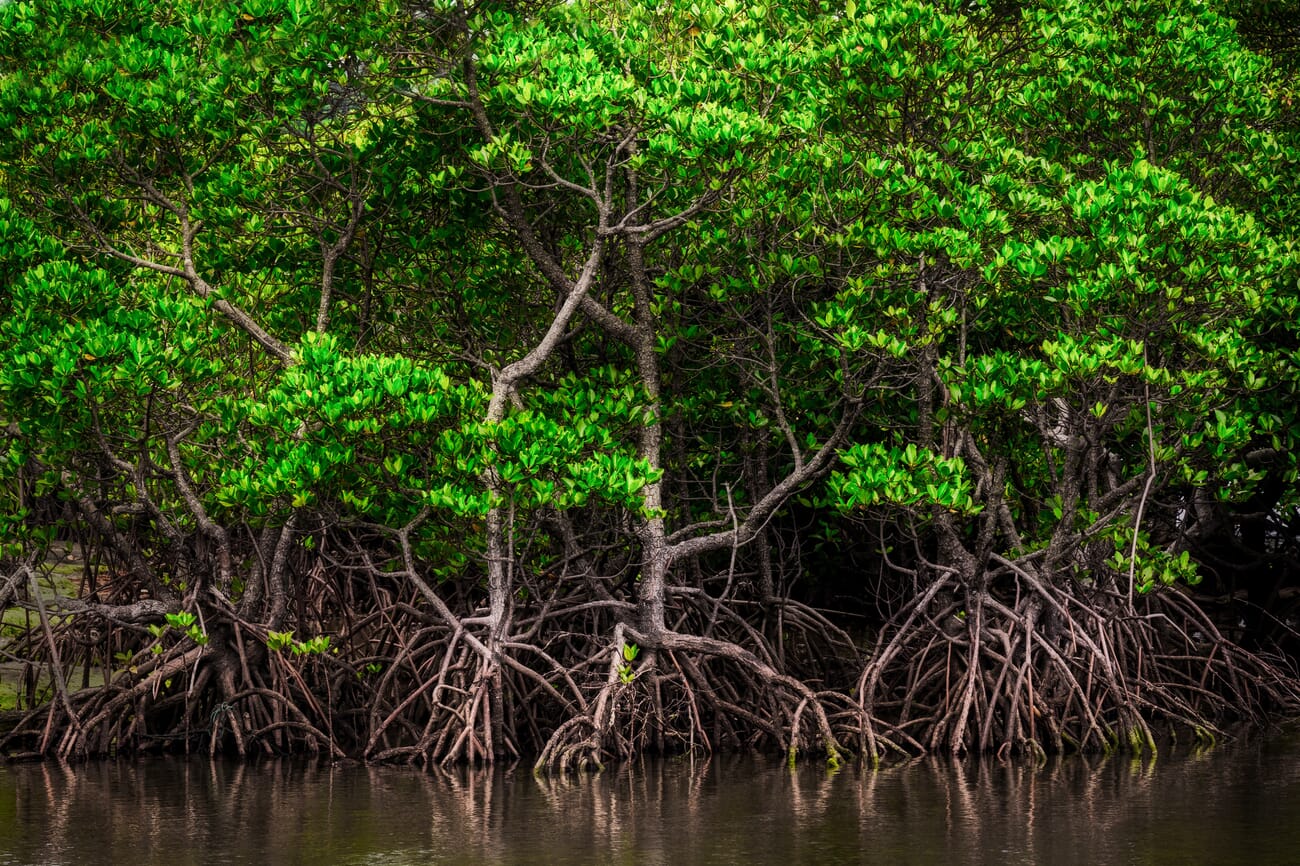 AUSTRALIA - Scientists with Australia’s Deakin University Blue Carbon Lab are kicking off a trial with biodegradable structures that could enhance the growth and survival of coastal wetland species like mangroves and sea grass as part of restoration work in Pork Phillip Bay and Western Port Bay. The structures, made from potato starch, provide seedlings with protection from high-energy environments without limiting their growth. They break down over time, making way for the established plants to thrive. Coastal wetlands, such as mangrove forests and saltmarshes, provide many benefits including protection from storm surges, and habitat for coastal wildlife. They also store atmospheric carbon, acting as a nature-based solution against climate change. However, coastal wetlands have been degraded and lost around the world and restoring them can be challenging. Dr Stacey Trevathan-Tackett of Deakin University’s Blue Carbon Lab says that restoration efforts can be hampered by harsh environmental conditions that damage wetland plants at crucial early stages of their growth – making it important to constantly develop new methods to encourage growth. “We are exploring new ways to help improve the success of restoration and recovery of wetlands,” Dr Trevathan-Tackett said in a press release. “This includes trialling new and creative techniques in different habitats and conditions, as well as working with local communities along the way.” AUSTRALIA - Scientists with Australia’s Deakin University Blue Carbon Lab are kicking off a trial with biodegradable structures that could enhance the growth and survival of coastal wetland species like mangroves and sea grass as part of restoration work in Pork Phillip Bay and Western Port Bay. The structures, made from potato starch, provide seedlings with protection from high-energy environments without limiting their growth. They break down over time, making way for the established plants to thrive. Coastal wetlands, such as mangrove forests and saltmarshes, provide many benefits including protection from storm surges, and habitat for coastal wildlife. They also store atmospheric carbon, acting as a nature-based solution against climate change. However, coastal wetlands have been degraded and lost around the world and restoring them can be challenging. Dr Stacey Trevathan-Tackett of Deakin University’s Blue Carbon Lab says that restoration efforts can be hampered by harsh environmental conditions that damage wetland plants at crucial early stages of their growth – making it important to constantly develop new methods to encourage growth. “We are exploring new ways to help improve the success of restoration and recovery of wetlands,” Dr Trevathan-Tackett said in a press release. “This includes trialling new and creative techniques in different habitats and conditions, as well as working with local communities along the way.”Like this newsletter?  Pease consider donating to MAP to keep it going. Giving could never be easier  *Articles in this newsletter may mention practices being used and/or show exagerated results being claimed without proof. Stories are presented here in effort to show mangrove related activity around the world and do not necessarily reflect Mangrove Action Project's views or mangrove restoration best-practices. NOTICEChildrens Art Calendars 2023
ORDER YOURS HERE
ACTION ALERTS
|
|
|
Mangrove Action Project Click here to view past newsletters
|
|
-
The community of adults and youth in Cayman Islands has come together recently to release a series of educational videos. Each is geared to...
-
By Alfredo Quarto, Program & Policy Director Co-founder, MAP There is a rather urgent situation concerning the bio-invasion of the Son...
-
By: Isabel Robinson, MAP Volunteer Intern Some months ago I decided to come to Thailand and do an internship in mangrove conservation, ...
MAP News Issue #596 = April 20, 2024
ENTRIES NOW OPEN! Mangrove Photography Awards 2024 10 Years Celebrating Mangroves GLOBAL - MAP has launched our 10th Mangrove Photograp...




